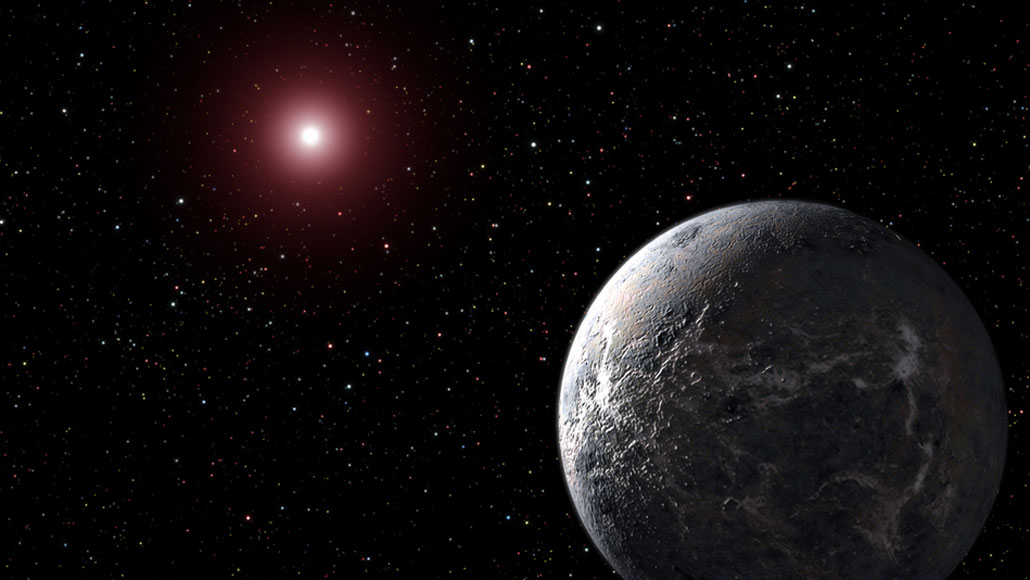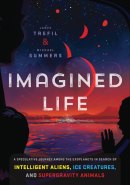‘Imagined Life’ envisions the odd critters of other planets
A new book offers a science-based take on what aliens might look like

Life in the universe need not be restricted to Earthlike planets. Even icy worlds like the one illustrated here might be habitable.
NASA, ESA, G. Bacon/STScI
Imagined Life
James Trefil and Michael Summers
Smithsonian Books, $29.95
An organism is shaped by the environment in which it dwells. Considering the rampant diversity of species on Earth, just imagine the oddities that could evolve on radically different sorts of planets — perhaps black-leafed “plants” that thrive in dim light or even creatures made of metal rather than carbon.
In Imagined Life, physicist James Trefil and planetary scientist Michael Summers set out on a safari through the cosmos, conjuring up the menagerie that might inhabit some of the thousands of exoplanets discovered thus far. Many of the book’s chapters explore potential life on various types of worlds, each vastly unlike Earth. Though fanciful and fun, the pair’s efforts are grounded in science and adhere to two main principles: that a small number of general rules govern the physical universe, and that Earth’s laws of physics, including thermodynamics and electricity and magnetism, apply everywhere else in the cosmos. Trefil and Summers also propose that in all but a few scenarios, natural selection drives evolution on other planets.
No matter the environment, life needs a source of energy. But that energy doesn’t have to come from a star’s radiation, the authors note. An ice-smothered world or even a rogue planet floating in interstellar space could, like Earth, have oceans with seafloor hydrothermal vents driven by heat from the decay of radioactive elements in the planet’s core or from heat left over from when the planet coalesced. Whether such oceans are ice-covered or not, life in these oceans would probably evolve to take advantage of the energy-rich chemicals spewing from those vents and need to be mobile, as vents can spring into being and just as quickly fade away. Vent creatures might either resemble those living in similar ecosystems on Earth or be completely unrecognizable.
On other types of worlds, life-forms could be even stranger. On a planet that has one side permanently facing its star, the most hospitable temperatures for life as we know it would exist in a thin north-south halo around the planet, where the sun always sits on the horizon. Supersonic winds would buffet the surface, scientists have suggested, so species would have to be low-slung and streamlined to minimize air resistance, the authors argue. On a rocky planet much larger than Earth, land organisms would have to deal with stronger gravity and would thus be short, squat and have strong bones or exoskeletons.
Imagined Life is an amazingly fun read. While musing about how life — and even technological civilizations — might evolve and thrive on other worlds, Trefil and Summers slip in tons of info about how life on Earth came to be.
Buy Imagined Life from Amazon.com. Science News is a participant in the Amazon Services LLC Associates Program. Please see our FAQ for more details.








